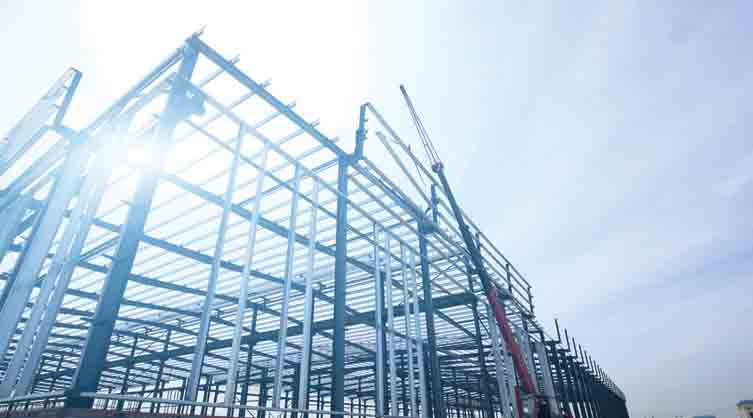The future of CE is ELECTRIC
By Edit Team | September 10, 2022 12:05 pm SHARE

The Indian construction equipment market is estimated to grow at a CAGR of 8.9 per cent by 2028. India is presently the largest market for earthmoving equipment. Owing to its high flexibility and easy operability even in critical surface conditions, it has become one of the most promising segments of construction equipment.
The earthmoving and mining segment is the largest in the Indian construction industry, followed by material handling and road construction equipment. Excavators and backhoe loaders were the fastest-growing major construction equipment in the market in 2021.
With the government of India pushing for a quantum leap in infrastructure development over the next decade, particularly in energy, roads, ports, railways, airports, and irrigation sectors, the prospects for the construction equipment industry are brighter than ever. Dimitrov Krishnan, Managing Director, Volvo CE India, says, “The construction equipment market will witness 2023 as a peak year in industrial demand, with a projected 10-15 per cent growth in 2022.”
Dheeraj Panda, Chief Operating Officer (Sales, Marketing & Customer Support), Sany Heavy Industry India Pvt. Ltd., states that the country’s continued urbanisation and major ongoing national highway projects are driving huge demand for road construction equipment, which includes earthmoving equipment. “As infrastructure grows and changes, demand for earthmoving equipment is also growing. Everything is interlinked, so as one grows, others associated with it also grow proportionately, “explains V G Sakthikumar, Managing Director, Schwing Stetter India.
Mohammed Abdul Rahman, Chief Executive Officer, Sahara Industry, comments on the trends, saying, “The government’s push for infrastructure development in India, especially transport infrastructure, will drive high growth for earthmoving equipment, and there will be a huge demand for earthmoving construction equipment.”
Innovating construction equipment for safety and reliability
Krishnan emphasises that innovation and technological advancement are at the core of Volvo Construction Equipment. He further emphasises their idea of developing and delivering fuel-efficient, safe, reliable, environment-friendly machines.
Regarding innovations, Rahman highlights that with the advent of telematics, automation, fuel efficiency, and other intelligent features, they reduce emissions and enhance equipment efficiency. With fast-paced technological innovations, it is expected that in the future, different machines and equipment will be able to communicate with each other on a planned schedule, further enhancing predictive systems.
On the other hand, Sakthi Kumar mentioned the integration of smart hydraulic systems with working modes for different applications and remote operation using 5G technology are features that are leading the tech advancements in the industry.
Meeting project deadlines amid disruptions
Inflation and supply chain disruptions are two big challenges the construction equipment industry in India faces in the wake of the pandemic. Krishnan says, “Because we operate in a B2B market and serve customers that are typically tender-based businesses largely reliant
on government contracts, there is little or no flexibility regarding pricing and delivery timelines.” So, we have to manage buffer inventories, find a way to work around shortages and plan production schedules well in advance to deliver equipment to end customers.
Identifying and overcoming procurement challenges is time, money, and effort well spent since procurement directly impacts an organisation’s financial credibility. Noting the same, Rahman details, “While procurement challenges can vary based on an organisation’s size and line of business, more common supply risks—from identifying the right supplier to keeping track of vendor performance and ensuring a stable supply of quality products—are always a major risk in the procurement process.”
When discussing the challenges and roadblocks in procuring projects and equipment, “Some challenges we face include the cost-to-profit ratio, the time it takes to get the project started, poor planning methods, and a lack of collaboration. However, it is important to remember that these roadblocks are not permanent fixtures that we must deal with at all times”, adds Panda.
The scope of electric and battery-based equipment
Since electric machines have just started rolling out into the market, R&D departments are still far away from bringing a complete alternative to diesel-powered machines to the market. Here, Sakthi Kumar stresses, “Maybe shortly, as technology advances for electric machines, efficiency and performance can be at par with diesel-powered engines.”
The overall trend of electrification in the construction equipment industry was triggered by the affordability of necessary technologies and strict emissions regulations. Looking at this trend, Panda believes that electric-powered machines lay the technical foundation for the rise of our unmanned products, leading to a new era of greater efficiency and accuracy.
The construction equipment industry is cautiously moving towards electric-powered and battery-powered equipment. Many benefits come with electromobility. Electric construction equipment not only reduces emissions; it also reduces noise. Cost, range, and power availability are the key concerns as e-mobility becomes mainstream. With an increase in demand, EV prices are predicted to become competitive with their internal combustion engine (ICE) counterparts in the light-duty sector by 2025. Considering the push for environment-friendly features across the construction and infrastructure segment, electric vehicles will soon be the norm on construction sites rather than a novelty.
“Inflation and supply chain disruptions are two big challenges the construction” Dimitrov Krishnan, Managing Director, Volvo CE India
“Integrating Smart hydraulic systems, telematics, and 5G will drive transformations in CE“. V G Sakthikumar, Managing Director, Schwing Stetter India.
“The affordability of necessary technologies has triggered electrification in the CE industry.” Dheeraj Panda, Chief Operating Officer (Sales, Marketing & Customer Support), Sany Heavy Industry India Pvt. Ltd.
“Procuring equipment has become more systematic and methodological, involving efficient, well-designed processes.” Mohammed Abdul Rahman, Chief Executive Officer, Sahara Industry
Cookie Consent
We use cookies to personalize your experience. By continuing to visit this website you agree to our Terms & Conditions, Privacy Policy and Cookie Policy.





















